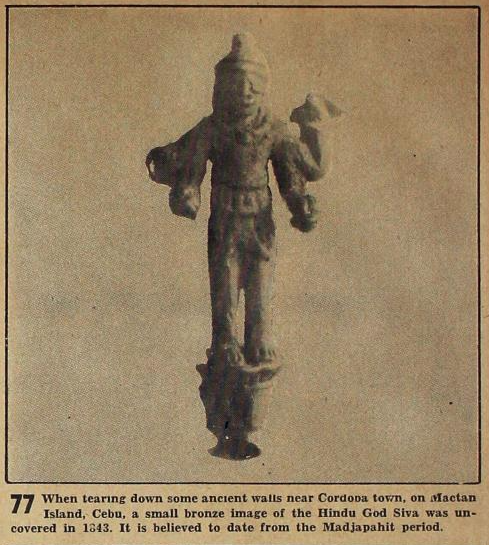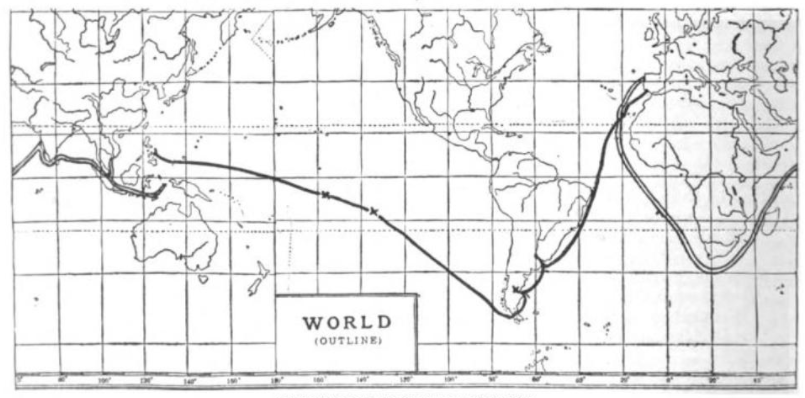|
Sri Lumay
Sri Rajahmura Lumaya, known in his shortened name Sri Lumay, was the first Rajah and the founder of the Indianized kingdom of historic polity of Cebu. According to the epic '' Aginid, Bayok sa atong Tawarik'', a Bisayan epic story, Sri Lumay was a half-Tamil and half Malay from Sumatra. Sri Lumay was the grandfather of Rajah Humabon. He may be called a ''semi-legendary'' figure, as he is found only in the oral traditions in the Visayan epic story of Aginid. Sri Lumay, ancestor of Rajah Humabon, a half-Malay and half-Indian from Sumatra established Cebu as an Indianized monarchy, and sired at least four known sons, namely Alho, Ukob, Parang the Limp, and Bantug (father of Rajah Humabon). Sri Alho ruled a land known as ''Sialo'' which included the present-day towns of Carcar and Santander in the southern region of Cebu.. Legendary accounts Sri Lumay, or Rajahmura Lumaya, established his kingdom in Cebu, which he himself ruled with his son, Sri Alho and Sri Ukob; they rul ... [...More Info...] [...Related Items...] OR: [Wikipedia] [Google] [Baidu] |
Cebu (historical Polity)
Cebu, also called Sugbu, informally referred to as the Rajahnate of Cebu, was an Indianized kingdom, Indianized Mandala (political model), mandala (polity) monarchy on the island of Cebu in the Philippines prior to the arrival of the Spanish Empire, Spanish conquistadors. It is known in ancient Chinese records as the nation of Sokbu (束務) (Hokkien) or Suwu (Mandarin Chinese, Mandarin).SONG, MING, AND OTHER CHINESE SOURCES ON PHILIPPINES-CHINA RELATIONS By Carmelea Ang See. Page 74. According to Visayan oral legend, it was founded by Sri LumaySantarita, J. B. (2018). Panyupayana: The Emergence of Hindu Polities in the Pre-Islamic Philippines. Cultural and Civilisational Links Between India and Southeast Asia, 93–105. o ... [...More Info...] [...Related Items...] OR: [Wikipedia] [Google] [Baidu] |
Santander, Cebu
Santander, officially the Municipality of Santander (; ), is a municipality in the province of Cebu, Philippines. According to the 2020 census, it has a population of 18,527 people. It serves as one of the sea ports connecting to the province of Negros Oriental with its passenger ferries making way to Sibulan in just 20 minutes. Roll-on roll-off (roro) barges of the Maayo Shipping Lines also carry motorcycles, cars, buses, and trucks between the ports of Liloan (in Santander) and Sibulan (in Negros Oriental) with trips taking about 30 minutes, and between Liloan and Larena (in Siquijor) in about 1 hour and 30 minutes. History Santander used to be under the Kingdom of Sialo, under the Rajahnate of Cebu. Santander was originally called Tañong, but as the Spaniards came, it was renamed Santander after a city on the northern (Atlantic) coast of Spain. The town was established in 1867 and the parish in 1897, It became a municipality during the American occupation in 1918. ... [...More Info...] [...Related Items...] OR: [Wikipedia] [Google] [Baidu] |
Filipino Hindus
Filipino may refer to: * Something from or related to the Philippines ** Filipino language, a de facto standardized variety of Tagalog, the national language, and one of the two official languages of the Philippines ** Filipinos, people who are natives, citizens and/or nationals of the Philippines, natural-born or naturalized * Filipinos (snack food), a brand cookies manufactured in Europe See also * Filippino (given name) * * * Filipinas (other) Filipinas may refer to: * Women in the Philippines * ''Filipinas, letra para la marcha nacional'', the Spanish poem by José Palma that eventually became the Filipino national anthem. * The original Spanish name, and also used in different P ... {{disambiguation Language and nationality disambiguation pages ... [...More Info...] [...Related Items...] OR: [Wikipedia] [Google] [Baidu] |
Ferdinand Magellan
Ferdinand Magellan ( – 27 April 1521) was a Portuguese explorer best known for having planned and led the 1519–22 Spanish expedition to the East Indies. During this expedition, he also discovered the Strait of Magellan, allowing his fleet to pass from the Atlantic into the Pacific Ocean and perform the first European navigation to Asia via the Pacific. Magellan was killed in battle in the Philippines and his crew, commanded by the Spanish Juan Sebastián Elcano, completed the return trip to Spain in 1522 achieving the first circumnavigation of Earth in history. Born around 1480 into a family of minor Portuguese nobility, Magellan became a skilled sailor and naval officer in service of the Portuguese Crown in Asia. King Manuel I refused to support Magellan's plan to reach the Moluccas, or Spice Islands, by sailing westwards around the American continent. Magellan then proposed the same plan to King Charles I of Spain, who approved it. In Seville, he married, fathere ... [...More Info...] [...Related Items...] OR: [Wikipedia] [Google] [Baidu] |
Lapulapu
Lapulapu (floruit, fl. 1521) or Lapu-Lapu, whose name was first recorded as Çilapulapu, was a datu (chief) of Mactan, an island now part of the Philippines. Lapulapu is known for the 1521 Battle of Mactan, where he and his men defeated Spanish forces led by Portuguese explorer Ferdinand Magellan and his native allies Rajah Humabon and Datu Zula. Magellan's death in battle ended his Ferdinand Magellan#Voyage of circumnavigation, voyage of circumnavigation and delayed the Spanish occupation of the islands by over forty years until the expedition of Miguel López de Legazpi which reached the archipelago in 1565. Modern Philippine society regards him as the first Filipino hero because of his resistance to Spanish Empire, Spanish colonization. Monuments of Lapulapu have been built all over the Philippines to honor Lapulapu's bravery against the Spaniards. The Philippine National Police and the Bureau of Fire Protection use his image as part of their official seals. Besides bein ... [...More Info...] [...Related Items...] OR: [Wikipedia] [Google] [Baidu] |
Nahalin (Historic Region)
Nahalin, also spelled Nahaleen, () is a Palestinian village located in the Bethlehem Governorate of the State of Palestine, to the southwest of Bethlehem in the West Bank. The village was well known for beekeeping and tens of beehives still exist in Nahalin today. The village is also known locally for its almond and olive trees, vineyards, parsley and vegetables, namely onions and beans. The built-up area of Nahalin consists of roughly 730 dunams, 20 of which make up the old center of the village. The village had a population of 8,741 in 2017. Etymology Conder asserts that the name Nehalin is derived from the biblical Hebrew נחל (''nahal''), "torrent", which has since been replaced by the Arabic word wadi but occasionally preserved in the name Nehalin, which designates locations in or close to large torrents. Palmer also writes that the name Nehalin is derived from Hebrew נחל, which he translates as "a water-course".Palmer, 1881, p324/ref> In Arabic, the name ''Nahl'' mean ... [...More Info...] [...Related Items...] OR: [Wikipedia] [Google] [Baidu] |
Town Crier
A town crier, also called a bellman, is an officer of a royal court or public authority who makes public pronouncements as required. Duties and functions The town crier was used to make public announcements in the streets. Criers often dressed elaborately, by a tradition dating to the 18th century, in a red and gold coat, white breeches, black boots and a tricorne hat. In English-speaking countries, they carried a handbell to attract people's attention, as they shouted the words "Oyez, Oyez, Oyez!" before making their announcements. The word "Oyez" means "hear ye," which is a call for silence and attention. ''Oyez'' derives from the Anglo-Norman word for ''listen'' (modern French, ''oyez'', infinitive, ''ouïr'', but has been largely replaced by the verb ''écouter''). The proclamations book in Chester from the early 19th century records this as "O Yes, O Yes!". History Europe Prior to widespread literacy, town criers were the means of communication with the people of ... [...More Info...] [...Related Items...] OR: [Wikipedia] [Google] [Baidu] |
Southeast Asia
Southeast Asia is the geographical United Nations geoscheme for Asia#South-eastern Asia, southeastern region of Asia, consisting of the regions that are situated south of China, east of the Indian subcontinent, and northwest of the Mainland Australia, Australian mainland, which is part of Oceania. Southeast Asia is bordered to the north by East Asia, to the west by South Asia and the Bay of Bengal, to the east by Oceania and the Pacific Ocean, and to the south by Australia (continent), Australia and the Indian Ocean. Apart from the British Indian Ocean Territory and two out of Atolls of the Maldives, 26 atolls of the Maldives in South Asia, Maritime Southeast Asia is the only other subregion of Asia that lies partly within the Southern Hemisphere. Mainland Southeast Asia is entirely in the Northern Hemisphere. Timor-Leste and the southern portion of Indonesia are the parts of Southeast Asia that lie south of the equator. The region lies near the intersection of Plate tectonics, ... [...More Info...] [...Related Items...] OR: [Wikipedia] [Google] [Baidu] |
Datu Daya
Datu Daya was a legendary lord of Kandaya ("Daya's (kingdom)"), the place that is now known as Daanbantayan on the northern tip of Cebu Island in the Philippines. According to oral tradition, Datu Daya was the ruler of the first settlers in northern Cebu. The new settlers cleared forests and in a few years were able to establish a progressive community. Muslim Moro raiders continually attacked the community and kidnapped women and children until a ''bantayan'' (watchtower) was constructed to defend the town. For his glory, Datu Daya was idolized. Cultural remnants The town of Daanbantayan, Cebu has an annual celebration of chants and dances known as Haladaya (literally, "a tribute to Daya"). Before the conversion of the district now known as Daanbantayan into a town, it was known as Kandaya (''kang Daya'' - Daya's place in Cebuano). See also * History of the Philippines (900-1521) ** Sri Lumay- founder of old Cebu ** Rajah Humabon ** Lapulapu ** Ferdinand Magellan ** Miguel ... [...More Info...] [...Related Items...] OR: [Wikipedia] [Google] [Baidu] |
Scorched Earth
A scorched-earth policy is a military strategy of destroying everything that allows an enemy military force to be able to fight a war, including the deprivation and destruction of water, food, humans, animals, plants and any kind of tools and infrastructure. Its use is possible by a retreating army to leave nothing of value worth taking, to weaken the attacking force or by an advancing army to fight against unconventional warfare. Scorched earth against non-combatants has been banned under the Additional Protocol II, 1977 Geneva Conventions. Origin of the term The term was found in English in a 1937 report on the Second Sino-Japanese War. The retreating Chinese forces burned crops and destroyed infrastructure, including cities, to sabotage the logistics of the advancing Japanese forces. Military theory Clausewitz wrote in ''Principles of War'': Clausewitz wrote in ''On War'': Historic examples Notable historic examples of successful scorched-earth tactics include the fai ... [...More Info...] [...Related Items...] OR: [Wikipedia] [Google] [Baidu] |






